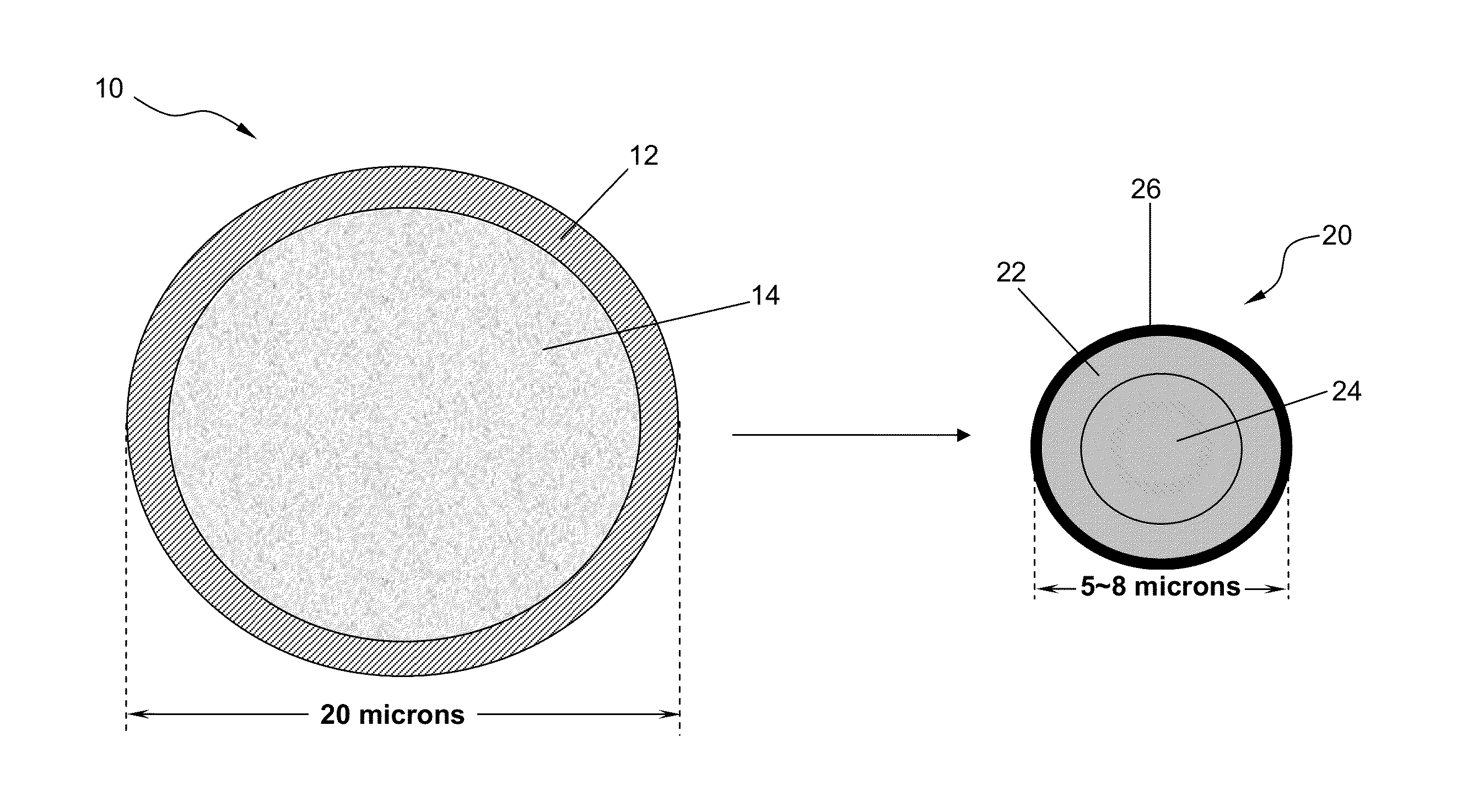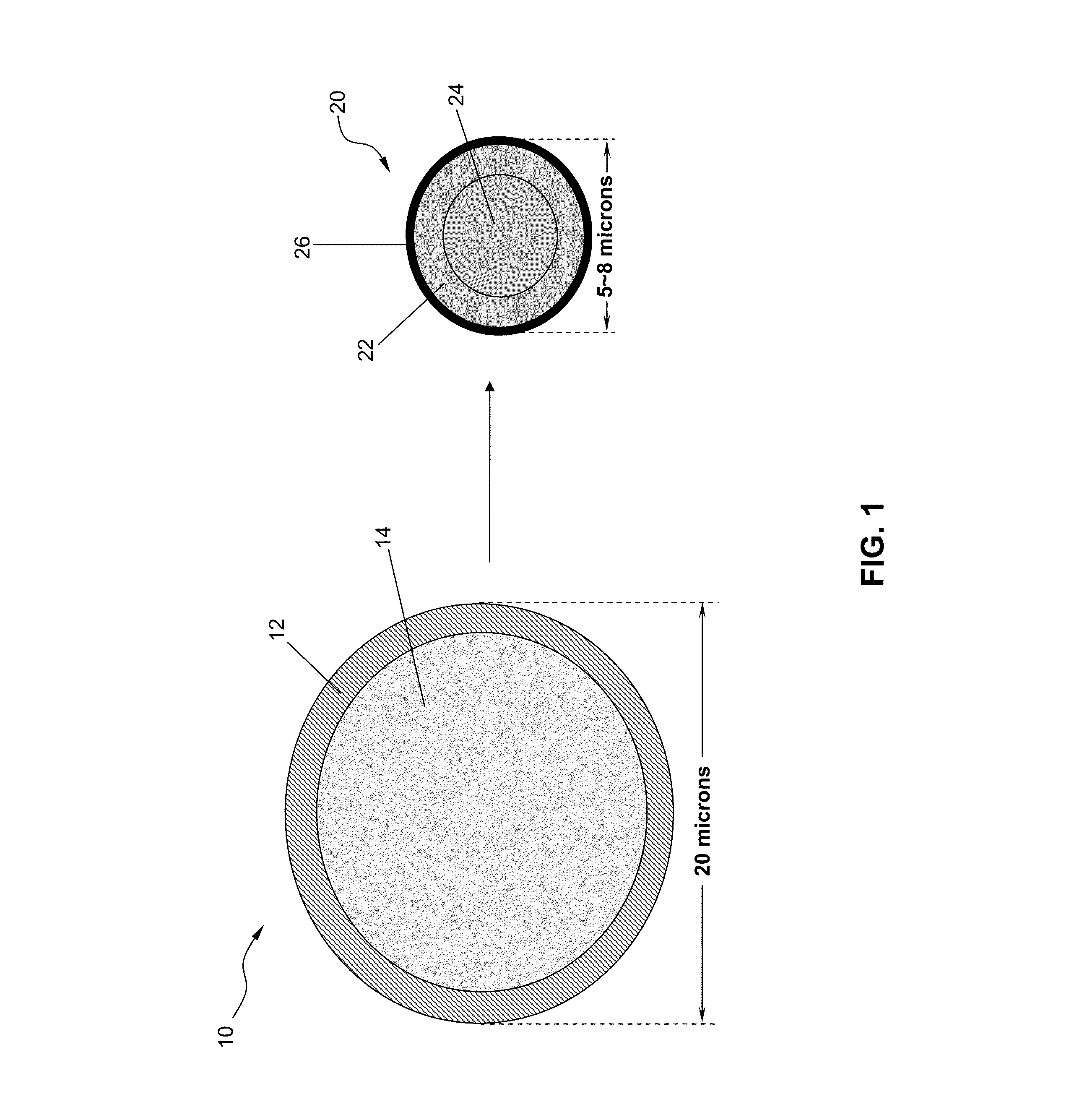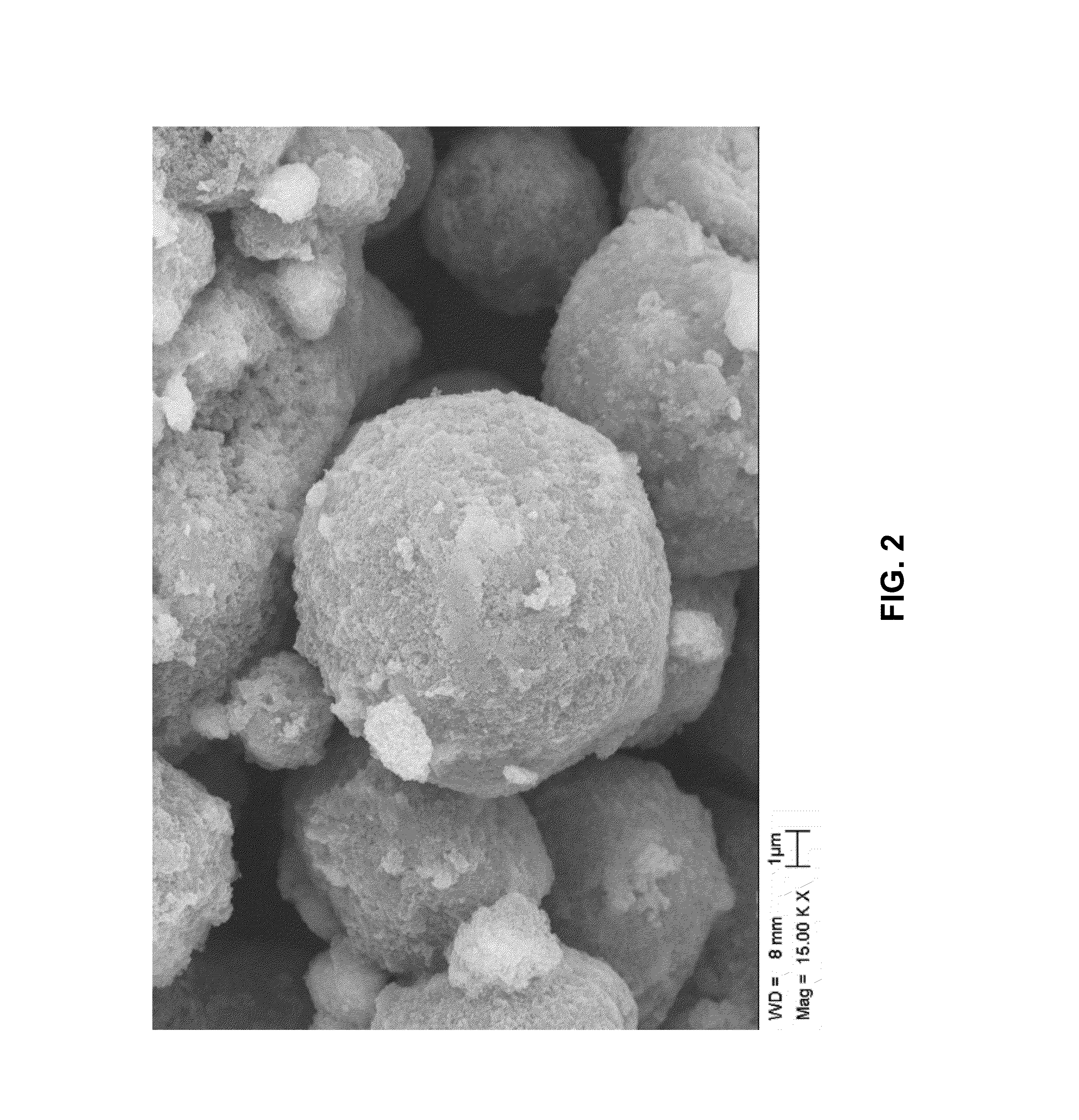Compositions Comprising Solid Particles Entrapped In Collapsed Polymeric Microspheres, And Methods Of Making The Same
a polymer microsphere and solid particle technology, applied in the direction of microcapsules, capsule delivery, coatings, etc., can solve the problems of dispersed or suspended particles agglomerating with each other, precipitating out of the composition, and and causing the effect of affecting the safety of consumers
- Summary
- Abstract
- Description
- Claims
- Application Information
AI Technical Summary
Benefits of technology
Problems solved by technology
Method used
Image
Examples
example i
[0074]A dry mixture was prepared by mixing 60% TiO2 powder and 40% Expancel 551 DE 20d 60 at room temperature, the TiO2 particles adhering to the surface of Expancel microspheres, as monitored by electron microscopy (not shown). The mixture was then poured in industrial grade acetone (3 kg acetone: 1 kg mixture) at room temperature with stirring. As a result, a gelled mixture was formed and the hollow, microspheres of Expancel, having engulfed the particles of TiO2, as monitored by electron microscopy (not shown), collapsed to form spheres having a diameter in the range of from about 6 to 8 microns. The gelling process was then quenched by the addition of water at room temperature (2 volumes water per volume acetone). The resulting slurry was decanted to remove water and acetone, washed three times with water and filtered across 2,000-4,000 mesh via centrifugation at 2,000 rpm with a Heinkel decanter centrifuge. The resulting cake was dried at 75-80° C. in a vacuum under a stream of...
example ii
[0075]800 g Expancel 551 DE 20 d 60 were placed into a mixing chamber. Acetone in an amount of about 6400 g was added under 20 RPM. A gel was formed and about 343 g of ultra fine titanium dioxide ((D(50) 2 microns)) were added to the gel. The combination of titanium dioxide and the gel was mixed until homogeneous. 1500 g of deionized water was added to de-gel the mixture. The acetone and water were removed by heating the combination in a vacuum chamber. The titanium dioxide particles were entrapped in the microspheres and the outer layer of the microsphere was over-coated with about 14 percent by weight of a Dow Corning 1107 silicone polymer. The final particle size of the TiO2-entrapping microspheres, measured using a Malvern Particle Size Analyzer, available from Malvern Instrument Scirocco 2000 at Worcestershire, UK, was between 5 to 8 microns.
example iii
[0076]Following the process outlined in Example II, but using Expancel 461 DE 40 d60, the same result was obtained, the final particle size of the TiO2-entrapping microspheres being measured as between 5 to 8 microns.
PUM
| Property | Measurement | Unit |
|---|---|---|
| particle size | aaaaa | aaaaa |
| particle size | aaaaa | aaaaa |
| particle size | aaaaa | aaaaa |
Abstract
Description
Claims
Application Information
 Login to View More
Login to View More - R&D
- Intellectual Property
- Life Sciences
- Materials
- Tech Scout
- Unparalleled Data Quality
- Higher Quality Content
- 60% Fewer Hallucinations
Browse by: Latest US Patents, China's latest patents, Technical Efficacy Thesaurus, Application Domain, Technology Topic, Popular Technical Reports.
© 2025 PatSnap. All rights reserved.Legal|Privacy policy|Modern Slavery Act Transparency Statement|Sitemap|About US| Contact US: help@patsnap.com



